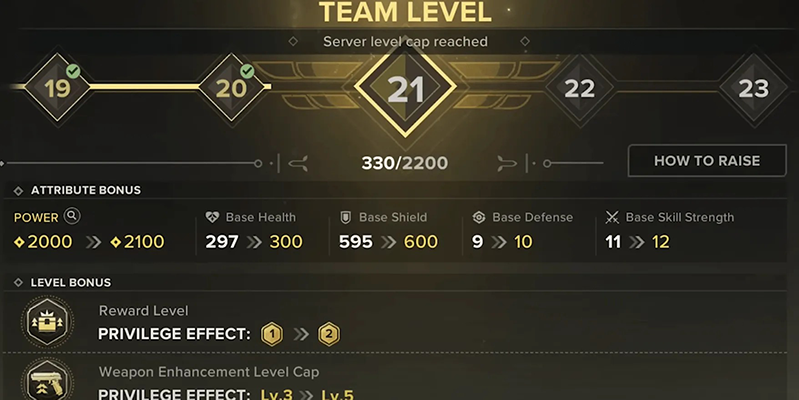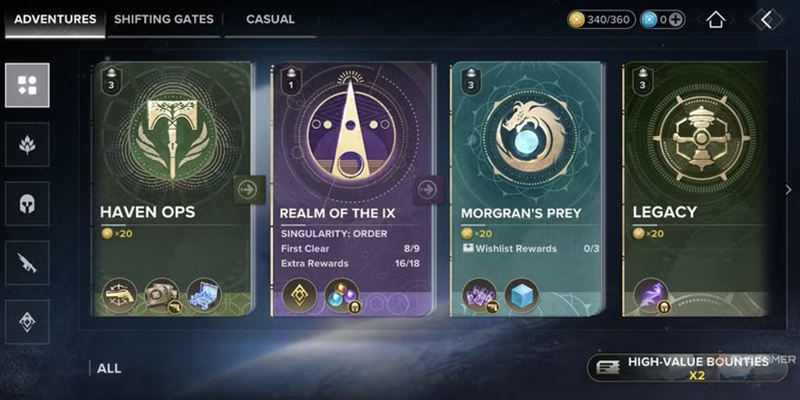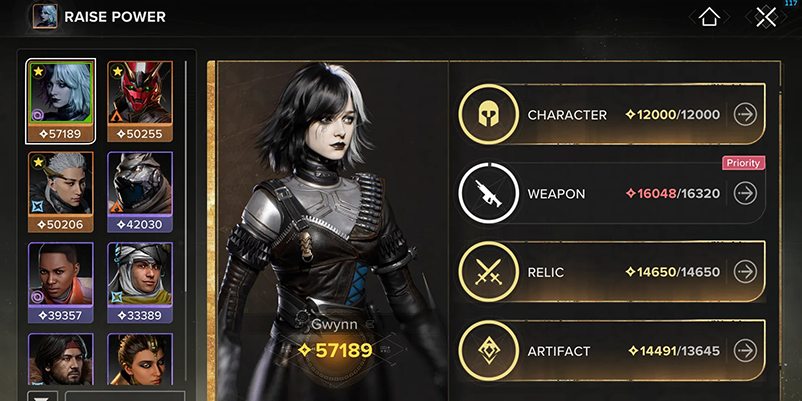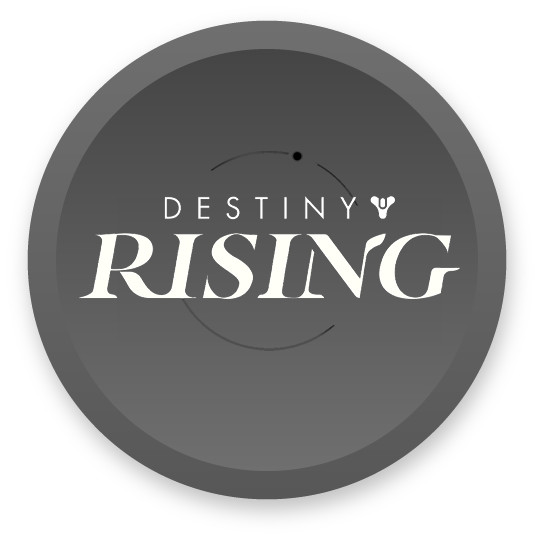Understanding the Two-Part Progression System
Destiny Rising breaks away from traditional RPG leveling by using two connected but separate progression tracks: Team Level and Power Level. This system is different from other Destiny games and most mobile RPGs you've probably played.
Power Level measures individual character strength through gear, artifacts, and character upgrades. Team Level sets your baseline stats, but Power Level decides whether you'll actually win fights.
Team Level controls what content you can access, while Power Level decides whether you'll succeed once you're there. Both systems feed into each other, creating a progression path that keeps all your characters relevant while still rewarding individual investment.

How Team Level Actually Works
The Core Benefits
When your Team Level goes up, every single character in your roster gets stronger automatically. You'll see boosts across five main stats:
These bonuses apply instantly to everyone, including characters you haven't even pulled yet. Any new hero you pull will already have all the stat bonuses from your current Team Level.
Unlocking New Content
Team Level acts as a gate for new features and activities. Starting at Team Level 40, you'll begin unlocking additional content. Major unlock points happen at levels 46, 60, 66, and 70, with each milestone bringing new upgrade systems or activities.
Key Team Level Milestones
Team Level 46 opens up new Activities, while level 66 gives you fresh ways to improve artifacts. These aren't arbitrary barriers but natural checkpoints that make sure you've learned existing systems before adding complexity.
Best Ways to Gain Team XP
Main Campaign First
The story campaign gives you the biggest XP chunks and should be your top priority when starting out. You can see exactly how much XP each mission rewards in the Quest Reward Preview before you start. Campaign missions scale with your current Team Level too, so they stay valuable throughout your entire progression.
Character Quest Lines
Character quests unlock as you meet new heroes and advance through the story. These give solid XP while diving deeper into character backgrounds and lore. Complete them when they pop up since they often unlock additional features or give you materials for upgrades.
Unlike the main campaign, character quests focus on individual heroes but still contribute meaningful XP to your account progression.
Adventure Activities
The Adventures tab contains repeatable content that provides steady XP gains. The main types you'll encounter include Haven Ops (co-op activities you can repeat for XP and gear), Calamity Ops (harder versions that give better rewards but need stronger builds), and Daily Adventures (limited-time activities that refresh regularly).
Adventures use Pinnacle Energy, which limits how many you can run in a given timeframe. Managing this resource well means getting maximum XP from your available playtime.

World Exploration
Exploring areas like Jiangshi Metro provides steady XP through finding collectibles, taking photos at specific landmarks, and discovering Golden Age Legacy Points. These activities build up your Exploration Progress and Reputation Rank while providing experience.
Higher reputation means more pulls on permanent banners, making exploration valuable beyond just the immediate XP gains.
Daily Bounties
Bounties work as background objectives you can complete while doing other activities. Check your bounties before starting quests or adventures, so you can knock out multiple goals during the same play session.
Bounties give modest but consistent XP without requiring dedicated farming time. Pick ones that align with what you're already planning to do rather than going out of your way for bounty completion.
Endgame XP Sources
Once you reach higher Team Levels, new XP sources become available. Gauntlet: Onslaught is a challenging mode that needs well-built characters but pays out big XP rewards. Don't attempt this until your Power Level can handle the difficulty spike.
Legendary Weekly Campaign offers weekly challenges that give significant XP but only reset once per week. These become your most efficient late-game XP source and should be top priority once available.
Dealing with Server Level Caps
How the Cap System Works
Destiny Rising uses a server-wide level cap that stops everyone from progressing past a certain Team Level. This cap goes up through daily server resets, keeping all players progressing at roughly the same speed regardless of how much they play. The current maximum Team Level is 80.
When you hit the cap, you stop gaining Team Levels but keep earning experience. Once the cap increases, all that stored XP applies automatically, sometimes jumping you multiple levels at once.
Making Cap Time Productive
Continue doing XP activities even while capped since this banked experience means instant progression when the cap lifts. Use cap periods to improve individual characters through gear upgrades, artifact improvements, and skill enhancements. This preparation keeps your characters competitive when new content unlocks.
Cap time is also perfect for stockpiling Lumia Leaves and other important currencies. Having resources ready enables quick character pulls and upgrades once progression resumes. Try PVP, Pack Hunts, and other game modes that give valuable rewards and keep you engaged during progression breaks.
Building Power Level Effectively
Gear-Based Progression
Power Level comes mainly from your equipped gear quality and upgrade level. Getting higher-level equipment gives the biggest Power Level jumps, so replace your weakest gear pieces before upgrading what you already have.
Artifacts and Skills
Relic Abilities are character-specific skill trees that boost Power Level and give tactical advantages. These need specific materials and often have Team Level or story requirements. Artifact Systems provide gear enhancement that gives stat boosts and set bonuses when you equip multiple related artifacts.
These systems create multiple paths forward, letting you customize progression based on available resources and your preferred playstyle.

Activates special set bonuses when equipped with matching artifacts, providing exponential power gains.
Managing Resources Efficiently
Primary Currencies
Lumia Leaves serve as your main currency for pulling characters from gacha banners. You get these from achievements, tutorials, milestone quests, and various activities. Smart Lumia Leaf management means balancing character acquisition with saving for specific banner events.
Pinnacle Energy controls access to daily adventures and weekly reward efficiency. This resource needs careful management to get maximum XP and rewards within daily and weekly limits.
Implactor Cores unlock advanced upgrade trees and enhancement systems. These become crucial during late-game when basic upgrades don't provide enough advancement.
High-Tier Materials
Essential Late-Game Materials
Exotic Infusion Stones are required for top-tier weapon enhancements and exotic gear upgrades. Get these mainly through Legendary Campaign missions and specialized marketplace trades.
Suppressed Photons activate catalyst systems for rare upgrade paths. These drop from Legendary Gauntlet activities and high-tier raids, so you need strong builds to access them.
Artifact Shards power artifact skill improvements and set bonus activation. You earn these through Strike boss fights and late-game events.
Destined Relics represent the highest-tier crafting materials for endgame equipment creation and upgrades. These extremely rare materials drop from Expanse content and specialized endgame activities.
Resource Strategy
Smart resource management means understanding which materials are valuable versus which are common. Early game should focus on renewable resources like Lumia Leaves and basic upgrade materials. Late game requires careful conservation of rare materials for critical upgrades.
Many high-tier resources have weekly limits, so progression planning becomes crucial once you reach advanced content. Focus on weekly activities that provide the most valuable materials for steady advancement without hitting resource walls.
Progression Through Different Phases
Early Game (Team Level 1 to 70)
This phase focuses on rapid advancement through campaign content and learning basic systems. XP comes quickly throughout this phase, with each activity providing substantial progress toward your next level. New mechanics and features unlock regularly, requiring adaptation to expanding gameplay options.
Most materials stay readily available during early game, allowing experimentation with different upgrade paths and character builds. Getting comfortable with Pinnacle Energy and other limited resources becomes important for maintaining progression speed.
Mid Game (Team Level 70 to 79)
The transition into late-game content brings new challenges. Equipment requirements get stricter, with poorly upgraded gear significantly hurting performance in new content. Mythic weapon cores become available, giving access to high-tier equipment that needs substantial resource investment.
Weekly activities become primary advancement sources, making consistent play schedules more important. New content requires understanding advanced mechanics and careful team composition planning.
Endgame (Team Level 79 to 80)
The final progression phase focuses on mastery and fine-tuning. Access to exotic infusion materials enables the highest tier of equipment upgrades but requires careful resource allocation decisions. Advanced artifact upgrades provide significant power increases but need understanding of complex upgrade interactions.
Progression becomes heavily dependent on weekly activity completion, making efficient time management crucial. Success requires deep understanding of character synergies, equipment interactions, and tactical positioning.

Solving Common Progression Problems
Getting More XP Efficiently
Many players waste time with poor activity prioritization. The fix involves creating daily and weekly routines that maximize Team XP while using limited resources like Pinnacle Energy efficiently.
Optimal Daily XP Rotation
Start your daily routine with bounty review, complete campaign or character quests, do adventure activities, and finish with exploration if time allows. For weekly priorities, get Legendary Weekly Campaign and Gauntlet: Onslaught done early in the week to ensure completion before reset.
Avoiding Resource Problems
Late-game progression often stalls because of poor resource management during earlier phases. Prevention means understanding which materials become scarce and planning ahead.
Breaking Power Level Plateaus
Players often hit walls where Power Level stops advancing despite continued Team Level progression. This usually comes from unbalanced equipment upgrades or poor priority choices.
Regularly check all equipment slots to find the weakest items that offer the best upgrade opportunities. Put upgrade materials into equipment that provides the biggest stat improvements rather than spreading resources evenly across all items. Make sure equipment choices work together for cohesive builds rather than just equipping the highest-level items available.
Advanced Strategies
Route Planning
Efficient advancement requires understanding the best sequence for unlocking new content and systems. This means balancing Team Level advancement with Power Level development so you can effectively handle newly unlocked activities.
Plan resource accumulation around upcoming Team Level milestones to ensure immediate access to new features when they unlock. Evaluate your Power Level against recommended values for upcoming content to identify upgrade priorities. Align major upgrade decisions with weekly reset schedules to maximize resource efficiency.
Building Your Roster
The Team Level system's account-wide benefits create unique opportunities for roster management. Plan character pulls around Team Level milestones so new recruits immediately contribute to current content.
Develop characters for specific content types while maintaining a balanced core roster for general activities. Balance individual character upgrades with account-wide progression to maintain overall roster strength.
Long-Term Planning
Sustainable advancement means understanding how current decisions impact future progression opportunities. Focus upgrades that provide lasting value rather than temporary power increases.
Stay aware of upcoming features and requirements to ensure readiness for new challenges. Regularly evaluate and adjust daily and weekly routines to maintain good progression rates as new content becomes available.
This approach to Team Level progression ensures efficient advancement while maintaining flexibility to adapt to new content and changing requirements throughout your Destiny Rising journey.

